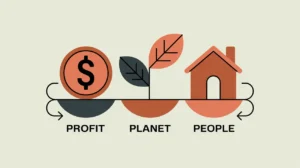Importance of Problem Discovery
Problem discovery is the starting point of innovation and change. It ensures that interventions are rooted in a clear understanding of the real challenges communities face, rather than assumptions or externally imposed agendas. In development and social innovation, problem discovery matters because misdiagnosing problems often leads to ineffective solutions, wasted resources, and missed opportunities for meaningful impact.
Definition and Features
Problem discovery refers to the process of identifying, framing, and validating the issues that require attention or innovation. Its defining features include:
- Inquiry and Exploration – uses research, dialogue, and observation to surface challenges.
- Proximity – engages those directly affected to ground understanding in lived experience.
- Root Cause Analysis – distinguishes symptoms from underlying drivers.
- Iteration – refines problem definitions as new insights emerge.
- Openness – allows unexpected issues or opportunities to surface.
How this Works in Practice
In practice, problem discovery can involve participatory research, community consultations, sector mapping, or systems analysis. For example, rather than assuming that low school attendance is caused only by lack of infrastructure, problem discovery may reveal underlying issues such as child labor, gender norms, or teacher absenteeism. Social enterprises often begin with ethnographic studies or user interviews to ensure alignment between needs and solutions. Challenges include bias from external actors, limited data, and pressures to rush into solution design.
Implications for Social Innovation
Problem discovery strengthens social innovation by ensuring solutions are relevant, proximate, and systemic. It encourages humility, listening, and co-creation with communities. For funders and practitioners, investing in problem discovery means resourcing early-stage exploration, supporting participatory methods, and resisting the urge to leap directly to solutions. By prioritizing problem discovery, innovators lay the groundwork for interventions that are more effective, inclusive, and sustainable.







